por Sebastian Moreno
My parents were born in Colombia and moved to the United States when they were teenagers. Because they had me in their early 20s, they had to grow up incredibly fast. I was born New York City and when I was 12, my parents decided it was more affordable to live in a house in Pennsylvania than cram four people in a one-bedroom apartment in the city. Growing up in a city and moving to the woods was a big change for me. I didn’t really appreciate living in the middle of a forest. I did spend a lot of my time in the backyard, but never exploring the four miles of uninterrupted forest behind our house. It was only when I reached high school that I began exploring the outdoors with my friends
After high school, I went to college to pursue a degree in pharmacy. Honestly, how I decided to pursue a career in pharmacy is still a mystery. Looking back, I think I chose that career because, as a pharmacist, I would be helping people, which is something I have always enjoyed. Also, I was pretty excited that I would be making a lot of money one day. What 18-year-old doesn’t love that idea?

“While I was on my hikes, I found myself asking all these how and why questions pertaining to nature.”
Sebastian Moreno
Pharmacy school sucked for me. I felt like I didn’t fit in with my peers and the classes were a total drag. I sabotaged my grade by not studying and putting in the effort to do well in classes. Due to my poor academic standing, I was kicked out of the pharmacy program. I found myself without any real direction and not quite sure what I wanted to do with life. I found solace being outside. I took this time to clear my head and think about what my next steps were going to be.

While I was on my hikes, I found myself asking all these how and why questions pertaining to nature. This piqued my interest and after talking to a few professors in the biology department, they suggested I take a population and evolutionary biology course. I really wasn’t sure what I would be learning but I figured what was the worst that could happen?
I loved the course, my peers, and my professors! Everything I was learning made sense to me. I was engaged in the classroom and my grades were significantly improving. My professors saw the eagerness in me, and I was presented with ecological research opportunities. First, I worked in a lab looking at squirrels and acorn dispersal. Although it was fun and interesting, I really wasn’t interested in working with small mammals. I then started working in a lab that studied birds. There, I learned valuable field work techniques and basic ecological concepts.

“My thesis looked at how large concentrations of urban vacant lots in St. Louis impact bird diversity. While working in this city, I was exposed to more than just birds.”
Sebastian Moreno
From my time in this lab, I knew I loved ecology and birds. But that was about it. I wasn’t quite sure where I saw myself working nor did I feel like I had enough experience to find a decent job. Graduate school seemed like a good way to continue improving my knowledge, skills, and narrowing my interests. I decided to pursue a master’s degree. My thesis looked at how large concentrations of urban vacant lots in St. Louis impact bird diversity. While working in this city, I was exposed to more than just birds. I got a first-hand experience of social and environmental injustices. This opened my eyes to a whole new world of ecology I was not familiar with. Although it was a bit too late to change my thesis, I knew my next chapter in life would incorporate these new interests. Again, with my newly found interests, I felt like I didn’t have enough experience to qualify for the jobs I was interested in. So back to school it was for me! Currently, I am pursuing a PhD. My goal is to mix my interests of birds, people, urban areas, and ecology together to create a project. While conducting my research, I also want to serve urban communities by connecting them with nature and empowering them to create positive changes within their community.
______________________________________________________________________________
Sebastian Moreno is a second year PhD student at the University of Massachusetts. He is interested in the intersection between wildlife and people. Sebastian‘s research looks to improve on the community science experience and lower the barriers that may prevent underrepresented individuals from participating in such programs. When he is not working on his dissertation, Sebastian is outside hiking, birding, or practicing falconry with his American Kestrel.






